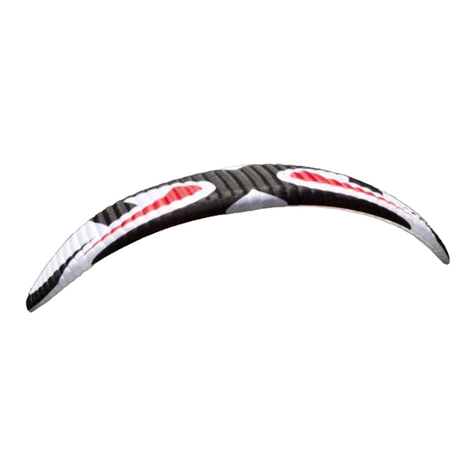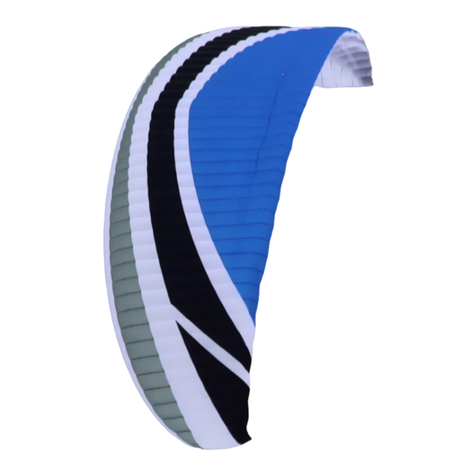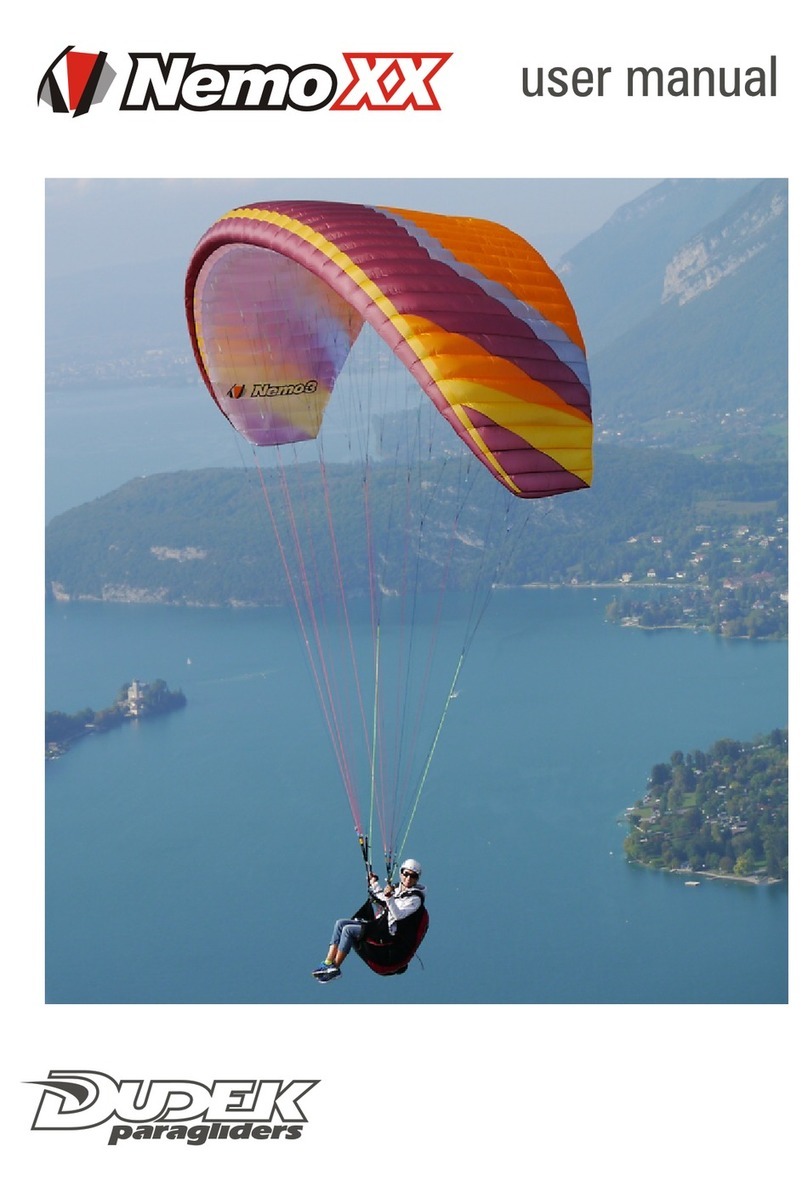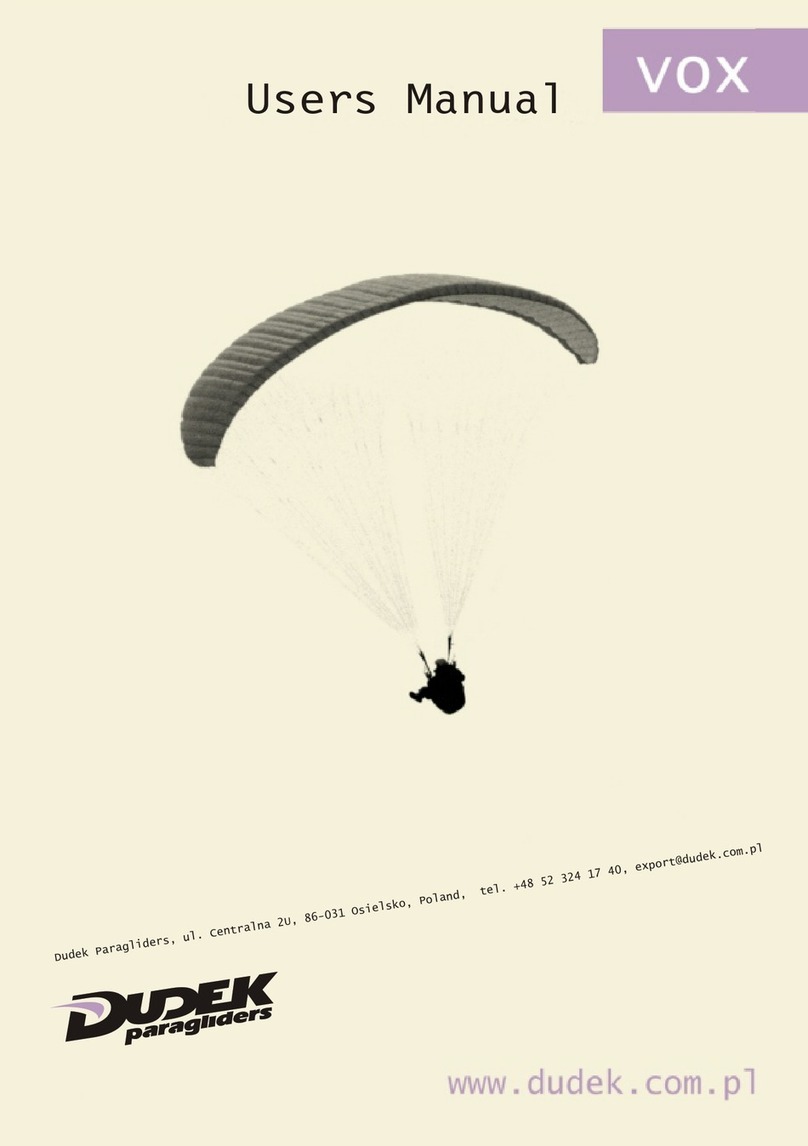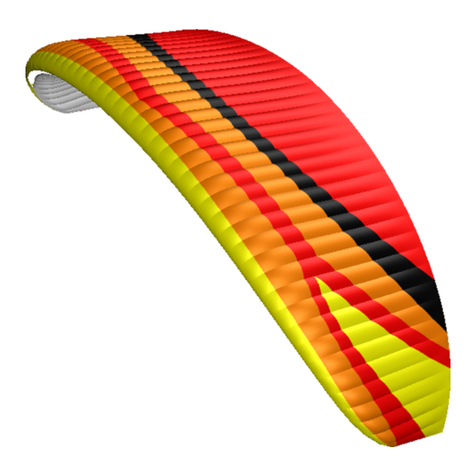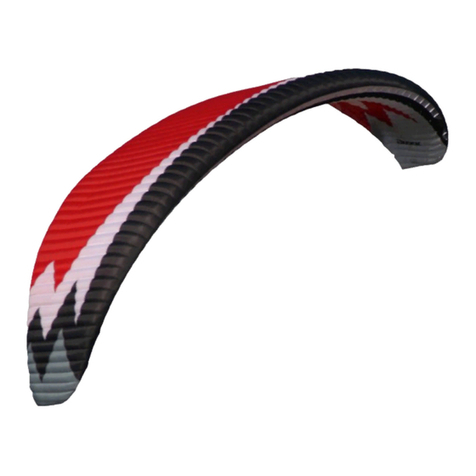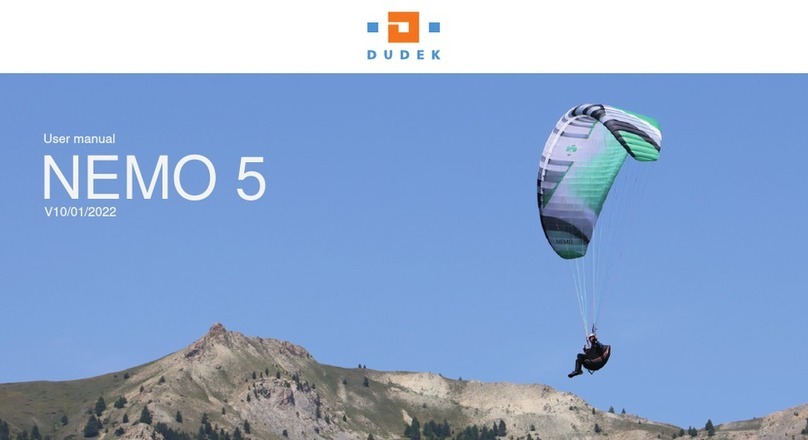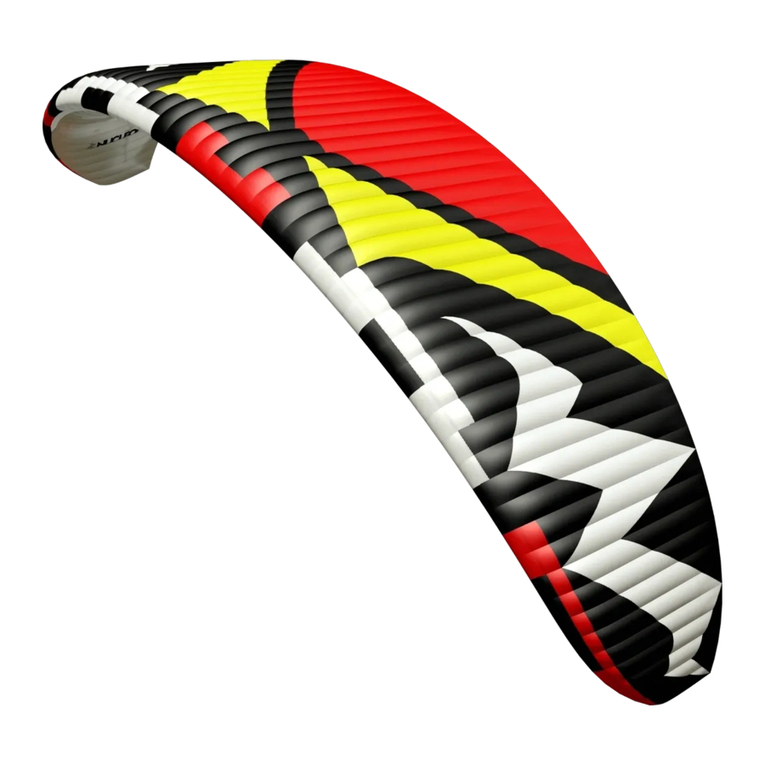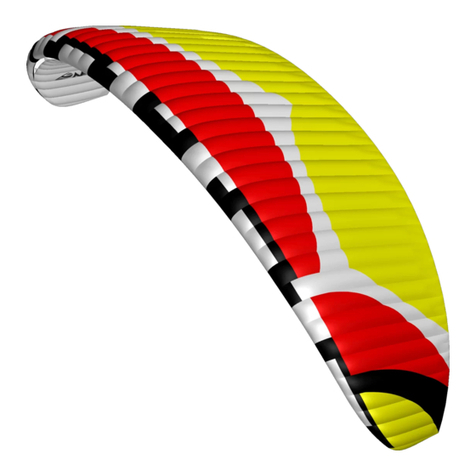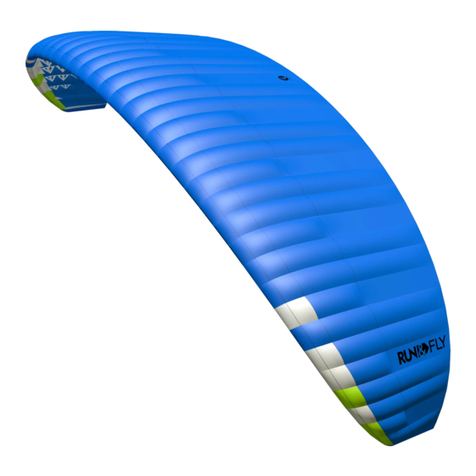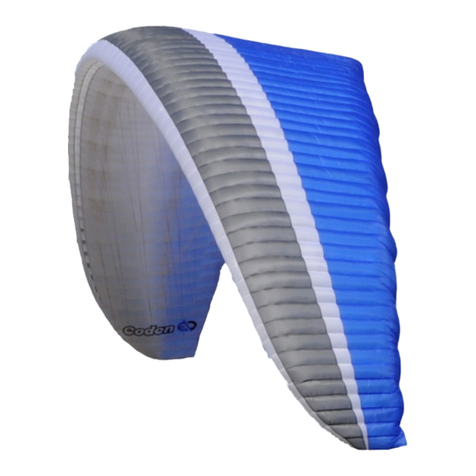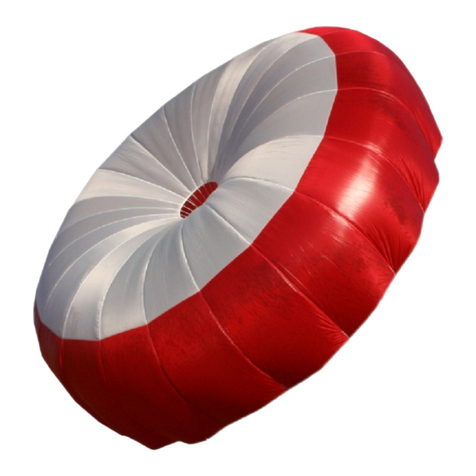The entire Synthesis Cabrio 3D body was designed in our CSG (Canopy
Shape Guard) system, comprising many elements resulting in exceptional
coherence and stability of the shape.
Below you will find a short description of CSG subsystems.
Synthesis Cabrio has an elliptical planform with slightly rearward swept tips.
Every second cell is divided in two, with ribs additionally supported by
diagonal VSS (V-shaped supports) system. Such arrangement ensures a
smooth top surface, exact aerofoil reproduction across the entire wingspan
and yet more importantly, minimal number of suspension points.
The lower surface has a RSS (Reinforcing Strap System) applied in the
wing’s interior. RSS is a ballooning-independent reinforcements system
made entirely of paragliding fabric, effectively stiffening and stabilizing the
canopy.
Synthesis Cabrio’s aerofoil is another product of our Dudek Reflex Airfoil
technology (DRA). It was designed with our previous experiences in mind
and thoroughly tested with numerical methods. It is a reflex profile, with all its
typical features described above.
The suspension point areas are additionally reinforced with laminated fabric
so that loads are equally distributed on three planes: vertically (with the ribs),
diagonally (with VSS system) and level through RSS.
All crossports have been prepared using OCD (Optimised Crossports
Design) technology. Carefully designed shapes of the openings and their
optimal placement between stress lines guarantee efficient pressure
distribution in the canopy and its quick inflation. These openings are scaled
together with the ribs, so their replicability remains perfect and they do not
disturb the aerofoil in any way.
The leading edge of Synthesis Cabrio is closed to airflow, and its precise
shape is supported by reinforcements of laminated fabric.
Cell openings are positioned on the undersurface in the vicinity of leading
edge. Their position was chosen very carefully, so that they got maximum
ram effect in possibly many flight situations. In several places the leading
edge features our CCS (Closed Cell Structure) system - this is a number of
closed cells in most important locations. It’s goal is to hinder the backflow
from the cells out and thus to facilitate their refilling and canopy recovery in
case of a collapse.
Each wingtip consists of four additional cells, creating stabilizers. They
maintain correct tension of the canopy, improve directional stability and play
important role in keeping your turns efficient and even. In the very tips there
are CS cleaning slots, placed there for easy removal of dirt from inside the
wing.
66



